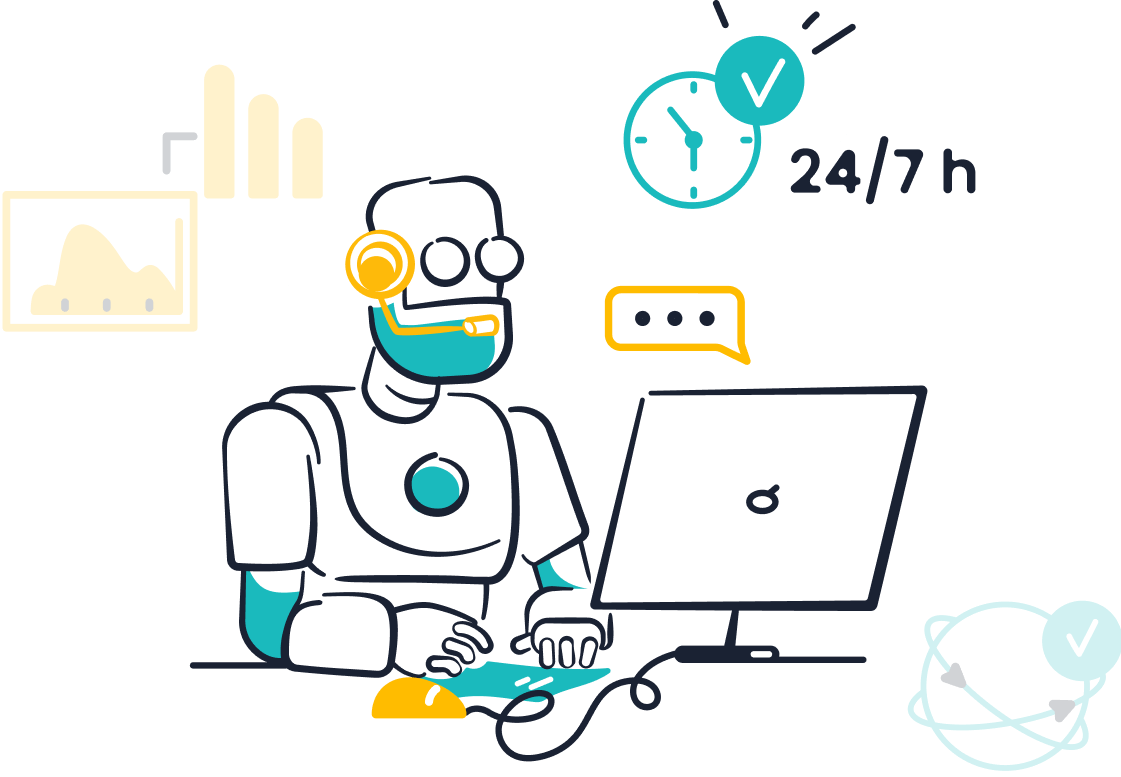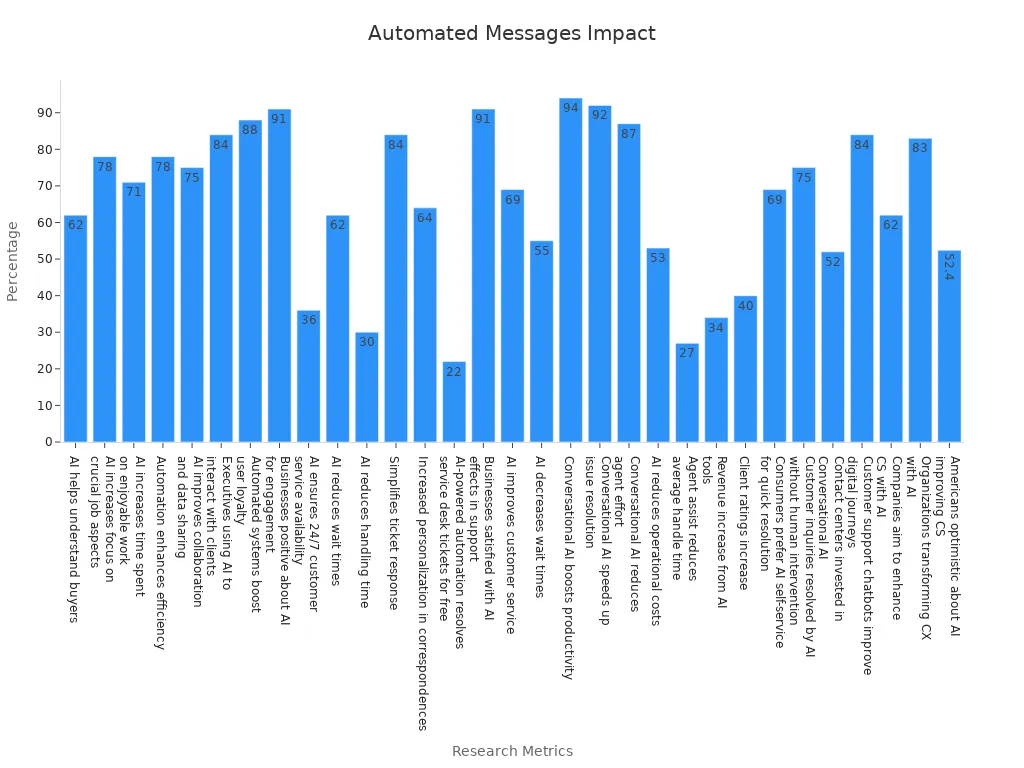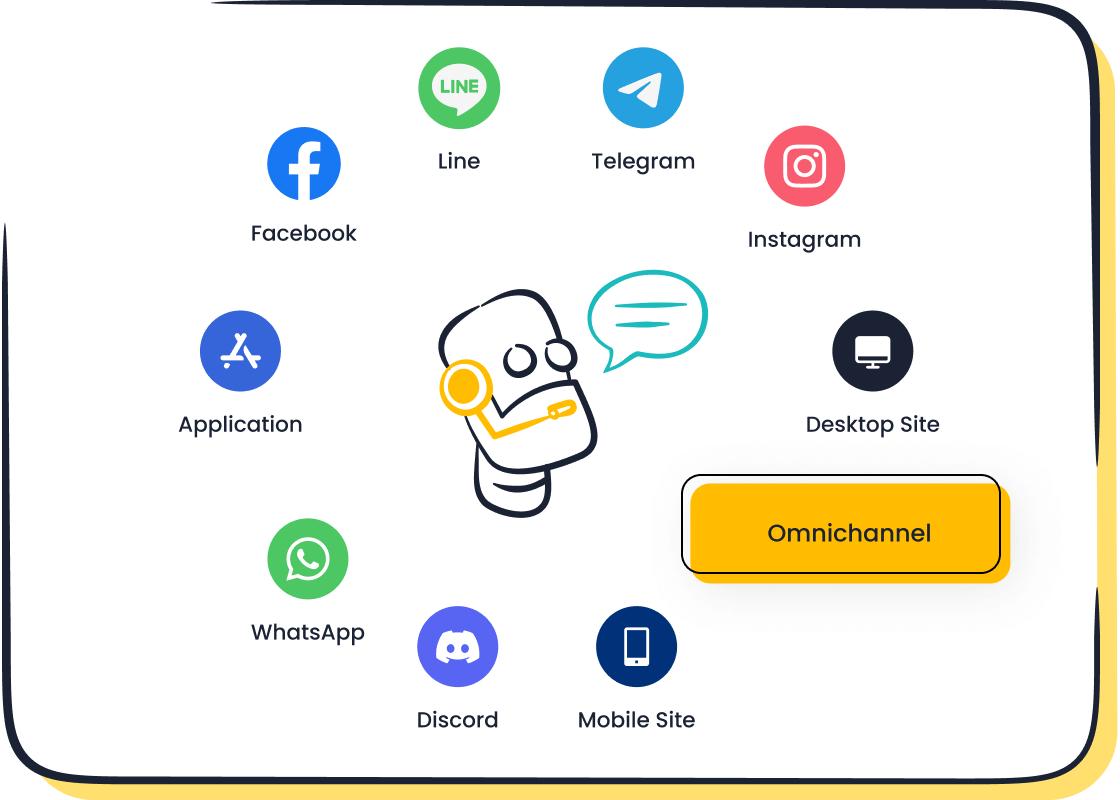Automated Message Example Tips for Better Customer Communication

You want every customer interaction to feel smooth and professional. Did you know 42% of customers prefer real-time chat, often getting answers in just 42 seconds? That’s the power of professional communication. With Sobot AI, you can use an automated message example to boost response speed and keep every reply on point with Sobot.
Automated Messages Overview

What Are Automated Messages?
Automatic messages are pre-written replies that you set up to answer customer inquiries right away. These messages can greet customers, confirm their requests, or let them know when you’re not available. You don’t have to type the same thing over and over. Instead, automatic messages handle the first step for you, making sure every customer gets a quick response.
You can use automatic messages on email, chat, or even social media. Sobot makes it easy to send these messages across all your channels. With Sobot’s omnichannel tools, you can answer customer inquiries on WhatsApp, SMS, and more—all from one place. This helps you keep your customer service fast and friendly, no matter where your customers reach out.
Why They Matter for Customer Service
Automatic messages play a big role in customer service. They help you reply to customer inquiries instantly, even when your team is busy or offline. Fast replies make customers feel valued and reduce their effort to get help. When you use automatic messages, you can improve key customer service metrics like:
- First Response Time (FRT)
- Customer Effort Score (CES)
- Customer Satisfaction Score (CSAT)
- First Contact Resolution Rate (FCR)
- Consistent Resolutions
Did you know? Businesses using AI and automation see big results. For example, 88% say automated systems boost user loyalty, and 91% feel positive about AI for customer engagement. Source

Sobot’s automated messaging solutions help you track these metrics and deliver better customer service every day.
Professional Auto-Reply Messages Essentials
When you want to create professional auto-reply messages, you need to focus on a few key elements. These essentials help you build trust, set clear expectations, and keep your customer service running smoothly. Let’s break down what makes auto-reply messages truly effective.
Clarity and Tone
You want every auto-reply to be clear and easy to understand. Use simple words and short sentences. Avoid jargon or confusing phrases. Your customers should know right away what your message means.
A professional tone matters, too. Stay friendly and polite. Even if you use an auto reply message, you can still sound warm and helpful. For example, start your auto-reply email with a greeting and thank the customer for reaching out. This small touch makes your messages feel more personal.
Tip: A professional auto-reply message should always include your company name, a thank you, and a clear next step. This keeps your communication professional and easy to follow.
Response Time and Expectations
Customers want fast answers. Your auto-reply messages should tell them when they can expect a real response. Setting clear expectations helps reduce frustration and builds trust.
Here’s a quick look at what customers expect across different channels:
| Communication Channel | Customer Expectation / Benchmark | Impact on Customer Satisfaction |
|---|---|---|
| 89% expect response within 1 hour; 31.2% want response within 15 minutes | Prompt replies reassure customers, reduce frustration, and prevent follow-ups | |
| Live Chat | Responses under 30 seconds are industry standard; customers expect replies within seconds | Quick replies keep customers engaged, reduce abandonment, and increase satisfaction |
| Phone Support | Acceptable wait time generally under 2 minutes | Faster phone support reduces frustration and improves experience for complex issues |
| Social Media (Twitter) | 78% expect response within 1 hour | Fast responses improve brand loyalty and engagement |
| Social Media (Facebook) | Customers expect replies within 4 hours | Timely replies maintain positive interactions and customer satisfaction |
When you use auto-reply messages, you can let customers know you received their message and give an estimated response time. This simple step can boost satisfaction and prevent follow-up emails or calls.
Did you know? Companies using AI-driven customer service solutions, like Sobot, report up to 30% lower operational costs by 2025. Automation also frees up your team to handle more complex issues, making your whole process more efficient.
Personalization
Personalization makes your auto-reply messages stand out. Instead of sending the same generic message to everyone, add a personal touch. Use the customer’s name, mention their specific request, or reference the channel they used to contact you.
Sobot’s Chatbot helps you personalize and automate replies across all your channels. You can set up auto-reply messages that greet customers by name, answer common questions, and even switch languages based on customer preference. This makes every auto-reply message feel more human and less robotic.
Here’s why personalization matters:
- SMS messages have a 98% open rate, much higher than emails.
- 73% of shoppers say AI has improved their experience.
- 97% of companies report better communication efficiency after using texting and automation.
When you combine professional tone, clear expectations, and personalization, you create effective auto reply messages that keep customers happy and engaged.
Remember: Professional auto-reply messages should always include clarity, professionalism, response time, alternative contacts, and personalization. With Sobot’s AI-powered tools, you can automate all these essentials and deliver a seamless customer experience.
Auto-Reply Best Practices
Do’s and Don’ts
Writing great auto-reply messages can make a big difference in how customers feel about your business. You want every auto-reply to sound helpful, friendly, and clear. Here are some do’s and don’ts of auto-reply emails and texts that you can follow to make your messages better:
Do’s:
- Use a warm greeting and thank the customer for reaching out.
- Keep your auto-reply messages short and to the point.
- Let customers know when they can expect a real response.
- Add a contact option if they need urgent help.
- Personalize your auto-reply by using the customer’s name or mentioning their request.
- Make sure your auto-reply email is accurate and complete.
- Use an empathetic tone to show you care about their needs.
Don’ts:
- Don’t use confusing words or technical jargon.
- Don’t send the same generic auto reply messages to everyone.
- Don’t forget to update your auto-reply messages for holidays or special events.
- Don’t make promises you can’t keep about response times.
- Don’t ignore feedback from customers about your auto-reply messages.
Tip: A clinical study at Stanford Health Care found that professional auto-reply messages work best when they are accurate, complete, and use an empathetic tone. The study also showed that short, clear messages help reduce stress for both customers and staff. Always review your auto-reply email drafts to make sure they fit your brand and meet your customers’ needs.
Here’s a quick table to help you remember the best practices for auto-reply texts and emails:
| Do’s | Don’ts |
|---|---|
| Greet and thank | Use jargon |
| Set clear expectations | Be too generic |
| Personalize | Forget to update messages |
| Be accurate and complete | Overpromise on response times |
| Use an empathetic tone | Ignore customer feedback |
If you use Sobot’s Chatbot, you can set up auto-reply messages that follow these best practices. The chatbot helps you personalize replies, answer common questions, and even switch languages for different customers. This makes your auto-reply messages feel more human and less robotic.
Consistency and Testing
You want your auto-reply messages to sound the same across all channels—email, chat, or social media. Consistency builds trust and helps customers know what to expect. Testing your auto-reply messages is just as important as writing them.
Start by sending your auto-reply email and auto reply messages to yourself or your team. Check if they look good and make sense. Try A/B testing, where you send different versions of your auto-reply messages to see which one works best. For example, you can test two auto-reply emails with different greetings and see which one gets better feedback.
Automated testing tools, like those in Sobot’s platform, let you simulate customer interactions. This helps you spot problems before your customers do. You can also use surveys or ask customers directly about your auto-reply messages. Their feedback helps you improve your auto-reply and make it more effective.
A/B testing and customer feedback are key parts of best practices. They help you find out which auto-reply messages work best for your audience. Automated testing scripts can check if your auto-reply messages work in different situations, like after-hours or during busy times. Manual checks help you see if your auto-reply email feels friendly and easy to read.
Note: Consistent and well-tested auto-reply messages help you avoid mistakes and keep your brand voice strong. Sobot’s tools make it easy to test, update, and optimize your auto-reply messages across all your channels.
If you follow these best practices for auto-reply texts and emails, you will save time, reduce mistakes, and make your customers happier. Remember, the right auto reply messages can turn a simple email into a great customer experience.
Automated Message Example Scenarios

Out-of-Office Auto-Reply
You want your out-of-office message to set the right expectations. A clear out-of-office reply message helps customers know when you will return and who they can contact. Here’s a table showing different out-of-office message strategies for various situations:
| Sector/Context | Example Strategy Description | Example Message Summary |
|---|---|---|
| General Professional | Clear absence, return date, alternative contact | Thank you for your email. I am currently out of the office and will return on [Return Date]. For urgent matters, contact [Alternative Contact]. |
| Working Abroad | Mention remote work, possible delays | I’m currently working remotely from [Location], responses may be delayed due to time zone differences. |
| Technology-Free Retreats | Offline status, alternative contact | I am on a digital detox retreat until [Return Date] and will not be accessing email. Contact [Alternative Contact]. |
| Bereavement Leave | Limited access, alternative contact | I am currently away on bereavement leave and will return by [Return Date]. For urgent matters, contact [Alternative Contact]. |
| Transition Periods | Slower response during transition | As I transition to a new role, my response time may be slower than usual. I’ll be fully available by [Return Date]. |
| Creative Messages | Humor or creativity | I am currently out of the office on an intergalactic space adventure. ETA [Return Date]. |

You can use Sobot’s Chatbot to automate these out-of-office messages across all your channels. This ensures every customer gets a fast, consistent auto-reply, even when you are away.
After-Hours Auto-Reply Text Message
When your business hours end, you still want customers to feel heard. An after-hours auto-reply text message can let them know you received their message and will follow up soon. Here are some examples:
- "We’re closed now, but will follow up first thing Monday!"
- "Hi! Thanks for reaching out after hours. Our team will get back to you during business hours."
- "Your message is important to us. We’ll reply as soon as we’re back in the office."
Sobot’s automated message example library lets you set up these auto-reply text messages for SMS, email, and chat. You can personalize each message, so customers always know what to expect.
Support and Confirmation Auto-Reply Messages
Support and confirmation auto-reply messages help customers feel confident that you received their request. For example:
- "Thank you for contacting support. We’ve received your email and will respond within 24 hours."
- "Your appointment with [Business Name] on [Date and Time] is confirmed! Let us know if anything changes by calling [Phone Number]!"
Businesses using Sobot’s customer support auto-replies see big results. Opay, for example, improved customer satisfaction from 60% to 90% by automating support messages and confirmations. Automated message example scenarios like these can boost engagement and reduce manual work. In retail, AI chatbots have increased customer satisfaction to 80% and cut wait times by 55%. You can use Sobot’s tools to create effective out-of-office message templates, after-hours auto-reply text messages, and support confirmations that work across all your channels.
Improving Customer Communication
Enhancing Satisfaction
You want every customer to feel heard and valued. When you use auto reply messages, you set clear expectations and show that you care about their time. Fast, friendly messages help boost customer satisfaction. Studies show that automation can increase customer satisfaction scores by 10-20%. Customers love quick answers and updates. In fact, 77% of people say they want a more personalized customer experience. That’s why it’s important to balance automation with a human touch.
Sobot’s platform helps you do just that. With Sobot, you can send personalized auto reply messages across chat, email, and social media. Brands like OPPO and Michael Kors have seen customer satisfaction rates reach as high as 93% after using Sobot’s solutions. You can also collect feedback with automated surveys, which have a 74% completion rate. This helps you keep improving your customer service and make every interaction better.
Tip: Use short, clear messages and always include a way for customers to reach a real person if needed.
Reducing Workload with Automation
Handling lots of customer service requests can be tough. Automation makes it easier. Auto reply messages take care of common questions, so your team can focus on more complex issues. Research shows that AI tools can handle up to 80% of customer service interactions, which means fewer agents are needed for routine tasks. Companies using automation report up to 6x more efficiency and a 60% drop in agent workload.
Here’s how automation helps:
- Answers repetitive questions instantly
- Sends reminders and confirmations without manual work
- Routes messages to the right person
- Collects and organizes feedback
| Benefit | Result |
|---|---|
| Faster response times | Happier customers, less waiting |
| Fewer errors | More accurate information in messages |
| Lower costs | Less need for extra staff during busy times |
| Better agent focus | Agents solve complex problems faster |
Sobot’s AI-powered chatbots and workflow tools let you automate messages and streamline your customer service. Companies like Opay have seen customer satisfaction jump from 60% to 90% and costs drop by 20%. Automation isn’t just about speed—it’s about creating a better customer experience for everyone.
You can boost customer satisfaction by using concise, personalized auto-reply messages. Experts suggest you test and update your automated message examples often. Sobot helps you automate, personalize, and optimize every auto-reply message. Try these strategies and see better results.
| CTA Strategy | Conversion Improvement |
|---|---|
| Personalized CTAs | 202% |
| Human touch in copy | 110.35% |
| Button-based CTA | 32.12% |

Explore Sobot’s Chatbot and contact center solutions to make every automated message example work for you.
FAQ
What makes a professional auto-reply message effective?
You want your auto-reply to be clear, friendly, and set expectations. Personalization and a quick response boost customer satisfaction. Sobot helps automate these messages for better customer experience.
How often should I update my auto-reply messages?
You should review your auto-reply email and auto-reply text message templates every quarter. Update them for holidays, business hours changes, or new customer service best practices.
Can automation improve customer satisfaction and reduce workload?
Yes! Automatic messages handle common customer inquiries 24/7. Sobot’s AI tools let you focus on complex issues, improving customer satisfaction and professional communication. Learn more at Sobot’s website.
See Also
Top Strategies To Enhance Customer Satisfaction In Live Chat
Essential Guidelines For Selecting Social Media Support Tools
Understanding The Efficient Functioning Of Call Center Automation
